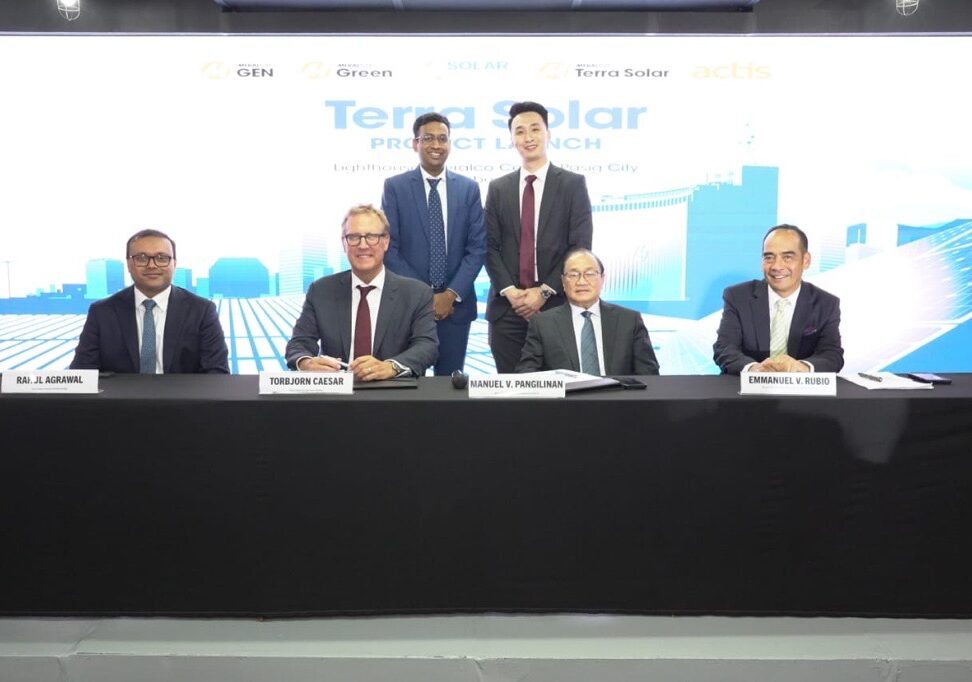
Actis signed a strategic partnership with Meralco and its subsidiary. (Photo: Actis)
To build the world’s largest solar power project, Terra Solar, the Philippines' largest distribution company, Manila Electric Company (Meralco), established a strategic partnership with Actis of the UK on Sept. 6.
This partnership has secured the largest foreign investment in the history of the Philippines' infrastructure, amounting to 34 billion pesos (about USD 602 million).
Actis secures 40% stake, backs project infrastructure and operations
Actis acquires a 40% stake in Terra Solar and will provide economic support for infrastructure contracting, construction, and operation. Previously, the project was wholly owned by Manila Electric’s subsidiary, Solar Philippines New Energy Corporation (SPNEC).
Meralco Chairman Manuel V. Pangilinan stated that Actis is the sole partner in this project and indicated that no further shares will be sold, thereby maintaining control within SPNEC.
Terra Solar, located in central Luzon, covers 3,500 hectares—about 83,300 basketball courts. The total investment is approximately 200 billion pesos (USD 3.5 billion), and it will feature 3.5GW of solar power capacity and a 4GWh battery storage system, providing electricity for 2.4 million households and reducing carbon emissions by 3.6 million tons annually compared to coal-fired power. Pangilinan mentioned that 80%-90% of the first phase is expected to be completed by the end of September.
Recently, Actis has been actively expanding in the Southeast Asian market. Its renewable energy developer, Levanta Renewables, acquired a 90% stake in a 139.4MW solar project from Thailand's Super Energy in July, marking its entry into the Thai market. Actis aims to achieve 1.5GW of operational capacity in Southeast Asia.

Actis is stepping up its expansion into Southeast Asia with recent solar investments in Thailand and the Philippines. (Photo: iStock)
Philipines’ energy transition remains sluggish
Despite Philippine government allowed foreign investors to fully own renewable energy projects and offered numerous tax incentives, the increase in wind and solar power in the Philippines has not kept pace with the growth of coal powerIn 2023, the share of coal-fired power increased to over 60% of total generation, rising by 6.5TWh—more than the overall growth in electricity demand—while wind and solar power only increased by 0.9TWh.
According to Nikkei Asia, although the Philippine government has banned the construction of new coal power plants since 2020, existing, upgraded, or extended plants continue to operate. This situation highlights the significant influence of the coal industry, financial players, and corporate groups over environmental organizations and the general public.
Expert suggests that the involvement of Chinese companies could help break the deadlock between renewable energy and coal development in the Philippines.
Source: Philstar, Inquirer, Actis, Nikkei Asia



